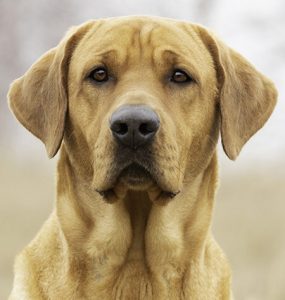It’s 7:30 a.m. and the temperature is a crisp 35 degrees. The anticipation and excitement is just about at peak level for me and Kira, my white lab. The hunt begins at 8:00 a.m. sharp and will continue for only two weeks, but the training and the waiting has endured for 14 months. For 16 month old Kira, this will be her first true test and she is anxious to get started. She has been on training runs before and has heard the thunder produced by the blast of a 12 gauge just a few feet over her head. But she knows today is different. With a soft whimper and the steady thump of her tail on the inside of the kennel she tells me she is ready. I look at my watch: 7:45 a.m.
It’s almost time.
The life of a bird dog is a simple one that consists of two things: hunting and waiting to hunt. The first thing that a bird dog learns is the importance of obedience to key words, sounds and hand signs. For a Labrador Retriever, retrieving is as natural as eating or sleeping. The ability to flush a bird takes some practice but soon becomes second nature as well. It doesn’t take long for the dog to figure out that it has to flush the bird before it can retrieve it. But that’s not all: the hunter has to do his part by shooting the bird or the effort of the dog to “get the bird in the air” is wasted.
7:58 a.m. — it’s time.
 When I approach the back of my truck and open the kennel door, Kira bursts through the opening and lunges for the ground. Immediately her nose is to the ground as she tries to locate her first bird. With a loud command I shout “get the bird in the air, Kira!” Instantly she begins weaving through the brush sniffing and snorting. Within 5 minutes, Kira has flushed her first rooster and with a quick blast of the gun the pheasant falls to the ground. The bird has barely landed before Kira has it in her jaws and has prevented any escape. With just a few bounds she is back at my side with the pheasant in her mouth and with a little coaxing she releases the bird into my hands and then playfully tries to take it back. The season is less than 10 minutes old and already it has been an enormous success for Kira. It doesn’t matter if she finds another bird today since she has just proven her worth as a true bird dog. Without her, my hunting would be far less fruitful and not nearly as enjoyable.
When I approach the back of my truck and open the kennel door, Kira bursts through the opening and lunges for the ground. Immediately her nose is to the ground as she tries to locate her first bird. With a loud command I shout “get the bird in the air, Kira!” Instantly she begins weaving through the brush sniffing and snorting. Within 5 minutes, Kira has flushed her first rooster and with a quick blast of the gun the pheasant falls to the ground. The bird has barely landed before Kira has it in her jaws and has prevented any escape. With just a few bounds she is back at my side with the pheasant in her mouth and with a little coaxing she releases the bird into my hands and then playfully tries to take it back. The season is less than 10 minutes old and already it has been an enormous success for Kira. It doesn’t matter if she finds another bird today since she has just proven her worth as a true bird dog. Without her, my hunting would be far less fruitful and not nearly as enjoyable.
Being a manager or engineer in today’s competitive world is littered with pitfalls and challenges that provide tremendous opportunities. It’s difficult to balance heuristics with the latest technology to achieve positive gains. Some managers and engineers spend an entire career seeking out tools that help them make the correct decisions when faced with tough challenges. One tool that has proven essential is discrete event simulation.
What makes simulation so important?
Simulation is a management tool that helps managers and engineers make correct decisions about systems, no matter the complexities. Whether the system is a production, warehousing, material handling, or a human system like healthcare, simulation modeling helps you “bird dog” problems associated with, and inherent in, such systems. Simulation can expose problems — it “gets the bird in the air” so the manager or engineer can deal effectively with the problem. It is impossible to deal with a problem effectively if you do not know why it is there. Simulation not only “flushes” the problem, but it “retrieves” the data that helps you understand why the problem exists. Simulation modeling is just as important for decision making for managers and engineers in charge of systems as spreadsheets are for managing business decisions, and should be used just as often.
How to make simulation a success

Simulation modeling is not just an advanced technology, it is an art. No modeler has ever built the perfect simulation on his first try. Just as a great deal of training and patience goes into developing a champion bird dog, you must allow time for training and experience to become proficient at simulation modeling. You have to teach a dog the basics of obedience, flushing, and retrieving before it can begin to understand how all these aspects are tied together to produce a successful hunt. Once learned, the dog and the master must practice to achieve consistent results.
A simulation modeler must also learn the basics of simulation project management, queuing theory, statistics, and modeling software syntax before he can produce a successful simulation project. The modeler can then perfect the art of simulation to quickly and accurately make decisions.
Make sure to use simulation correctly. It would be foolish for a man to use his bird dog to try and catch fish. Because of the stochastic nature of simulation models, they are not intended for optimization or exact answers. Simulation models provide understanding on how complex systems interact in order to predict behavior. The ability to predict future behavior is your most powerful decision making tool.
Take the time to train, flush out the problem and resolve the “bird in the air” with simulation. The pay back is well worth it.
Want to learn more?
Do you have simulation needs that are not being addressed? Please contact us for a quote on software or services. You might be surprised just how affordable and informative a simulation project can be.
